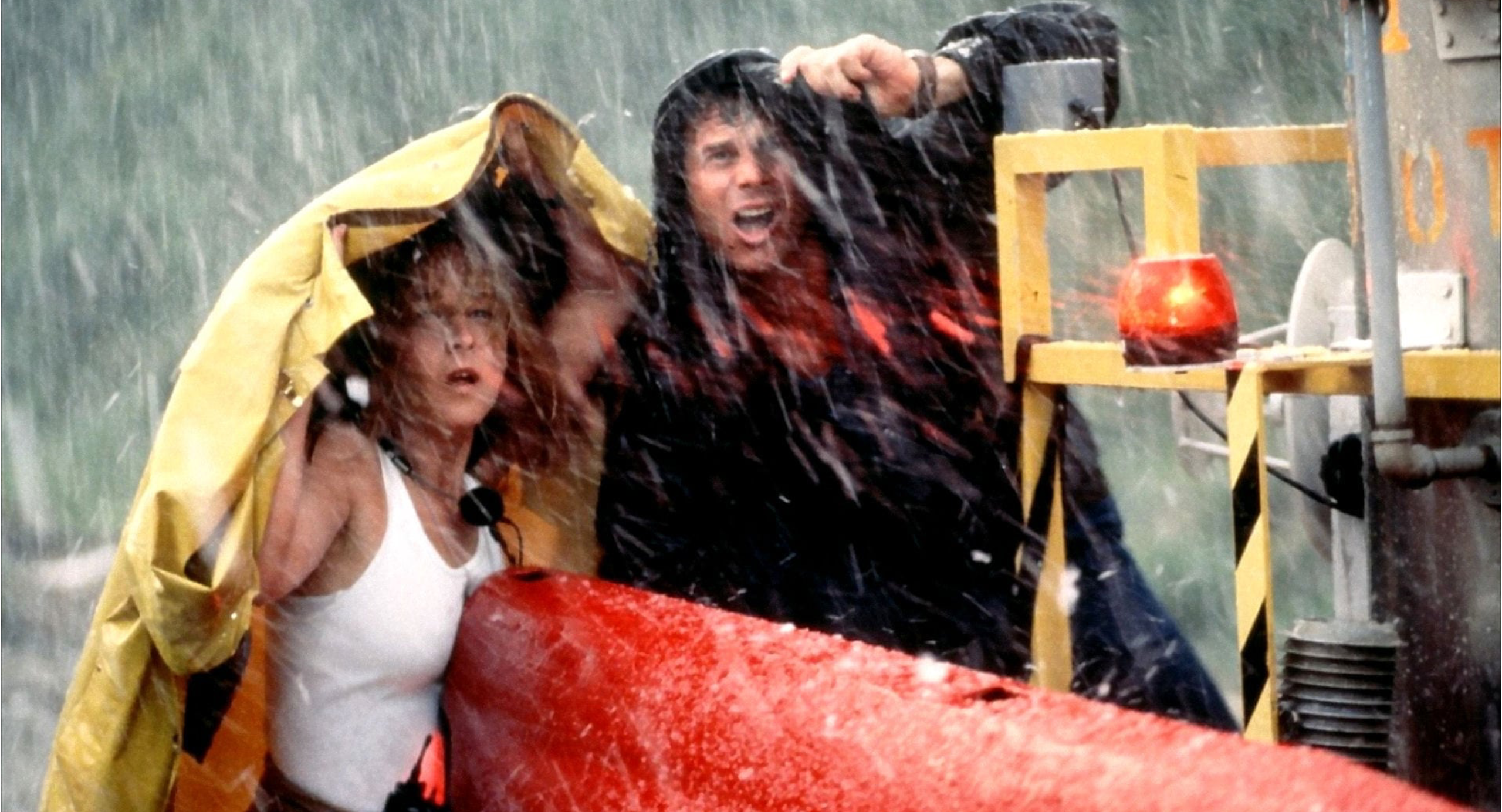Twister – Film Review
Published July 19, 2024

Released in 1996 and directed by Jan de Bont, Twister is a disaster film that rides on the thrill of tornado chases and the turbulent dynamics of its central characters. While it captivated audiences at the time with groundbreaking special effects and intense action sequences, a closer examination reveals a film laden with narrative shortcomings and underdeveloped characters. Despite its technical achievements, Twister ultimately fails to deliver a compelling story.
Twister follows Dr. Jo Harding (Helen Hunt), a dedicated and somewhat obsessive storm chaser, and her estranged husband, Bill Harding (Bill Paxton), a former storm chaser turned weatherman. The pair are brought back together by the pursuit of their mutual goal: deploying a revolutionary weather data-gathering device, “Dorothy,” into the heart of a tornado. Alongside a quirky and diverse team of fellow storm chasers, they race against a rival group led by the corporate-funded Dr. Jonas Miller (Cary Elwes).
One of the standout aspects of Twister is its special effects. For its time, the film was a technical marvel, using state-of-the-art CGI to bring the chaos and destruction of tornadoes to life. The visual effects team, led by Industrial Light & Magic, created some genuinely breathtaking sequences. The scenes where tornadoes tear through the landscape, uproot trees, and fling vehicles through the air are still impressive by today’s standards. The climactic F5 tornado is a spectacle of nature’s fury, showcasing the film’s ability to depict the sheer power and unpredictability of these storms.
However, while the effects are visually striking, they often overshadow the narrative, serving as the primary attraction rather than complementing the story. The film’s reliance on spectacle sometimes feels like a crutch, compensating for the thin plot and shallow character development.
The central characters in Twister suffer from a lack of depth and complexity. Dr. Jo Harding’s obsession with tornadoes is rooted in a traumatic childhood experience, which is briefly touched upon but never fully explored. This backstory, which could have provided a rich emotional foundation for her character, is instead used as a cursory explanation for her reckless behavior.
Bill Harding, portrayed by Bill Paxton, is a character who seems to oscillate between roles without much conviction. His transition from a weatherman to a storm chaser and back again is never convincingly explained or developed. The chemistry between Hunt and Paxton is lukewarm at best, and their characters’ reconciliation feels forced and unearned.
The supporting cast, which includes Philip Seymour Hoffman as the eccentric Dusty, is given even less to work with. Hoffman’s energetic performance is a highlight, but his character is more a caricature than a fully realized person. The rest of the storm chaser team is a collection of stereotypes and one-dimensional figures, providing comic relief and technical jargon without any real substance.
Twister follows a formulaic and predictable narrative structure. The film is essentially a series of tornado encounters, each more dangerous than the last, interspersed with brief moments of character interaction and exposition. This episodic approach creates a sense of repetition, as the plot advances through a cycle of chase, encounter, and escape.
The film’s antagonist, Dr. Jonas Miller, is a typical corporate villain, lacking nuance or motivation beyond greed and competition. His character serves as a shallow foil to the protagonists, offering no real threat or challenge. The rivalry between Jo and Bill’s team and Jonas’ crew is underdeveloped and fails to generate genuine tension or conflict.
The film attempts to explore themes of obsession, the pursuit of knowledge, and the human fascination with nature’s destructive power. However, these themes are not fully realized or integrated into the narrative. Jo’s obsession with tornadoes and her desire to understand them is a central motif, but it lacks the emotional depth and exploration needed to make it compelling. The film touches on the idea of scientific discovery and the lengths to which people will go for it, but this is overshadowed by the focus on action and special effects.
The script, penned by Michael Crichton and Anne-Marie Martin, is another area where the film falters. The dialogue is often clunky and expository, serving more to explain the plot and technical details than to develop character or theme. Many lines feel forced and unnatural, detracting from the overall immersion of the film.
Humor is injected through the banter of the storm chaser team, but it often feels out of place or overly broad. The comedic elements occasionally undermine the tension and urgency of the tornado encounters, disrupting the film’s tonal balance.
Twister is a film that excels in visual spectacle but falls short in storytelling and character development. Its groundbreaking special effects and thrilling action sequences made it a memorable blockbuster in the mid-90s, but these elements alone cannot sustain a film. The lack of depth in its characters, predictable narrative structure, and underwhelming script diminish its impact and replay value.
